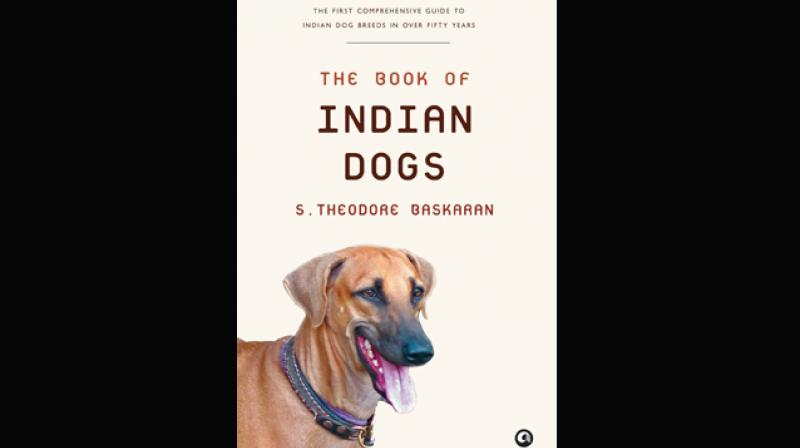Tracing the history of man's best friend

At a time when the native Indian breeds of dogs are gradually starting to become less popular, with the growing fascination to have foreign breeds at homes, renowned wildlife conservationist and naturalist from Tamil Nadu, S. Theodore Baskaran, recently penned The Book of Indian Dogs, published by the Aleph Book Company.
Through his account, he traces the history of around 25 native Indian breeds like Rampur hounds, Rajapalayams etc. With such little being documented about dogs in our history, Baskaran’s book gives a well-informed insight into the lives of native Indian dogs.
How did his passion towards researching on dogs begin? “I grew up in a village and we always had dogs in our house — we even took them out on walks and for swimming! But I developed an interest in Indian dogs only after I acquired a Rajapalayam pup,” Baskaran explains and adds, “But if we see the notes written by Indians, there are actually no mentions of dogs — because dogs are always despised, used as a curse word infact.”
The 76-year-old author, who has been associated with the Kennel Club of India, Chennai, believes that there is a prejudice in the mindsets of Indians, leading to neglecting the native species.
“This is a result of the colonial mindset, which discounted things which were Indian — for example, we neglect our languages and have a fascination for foreign languages! It’s only now that we are getting out of this kind of mindset and being proud about our native languages. In India, traditionally, the upper castes never cared for dogs; it’s only the working class, scheduled castes and farmers who were rearing them,” he elaborates.
With finding any documentation of native breeds being a rarity, Baskaran says, sources need to be unorthodox while doing such research.
“Only when the British came, and people started climbing the Mount Everest, did people started noticing hundreds of dogs in the Himalayas, like the Lhasa Apso and they left notes about it. There were also district gazetteers, journals, hunting books etc. When one wants to research, one needs to look at this kind of unorthodox sources to get any information about dogs.”
It is also important for one to consider native breeds of dogs as a form of heritage, the conservationist opines — “We think only Carnatic music or Taj Mahal are a part of our heritage. But animals are also a part; they have evolved over the years, suiting particular climates and geography — they are great works of nature. These have to be preserved; otherwise, we will have a totally boring world. Many dogs are absolutely unique, and their gene pools survived for a million years. Only after the arrival of the British did they tamper with the genes by cross-breeding. They brought in foreign breeds, and only then the upper castes began to have dogs as pets.”
With over 30 million ownerless dogs in our country, Baskaran feels that the government must accept that its animal birth control ways have failed.
“Once we accept it, then we can try to find a scientific solution. There are countries like China, Philippines which have been able to manage their stray dogs — why can’t we?” he concludes.

